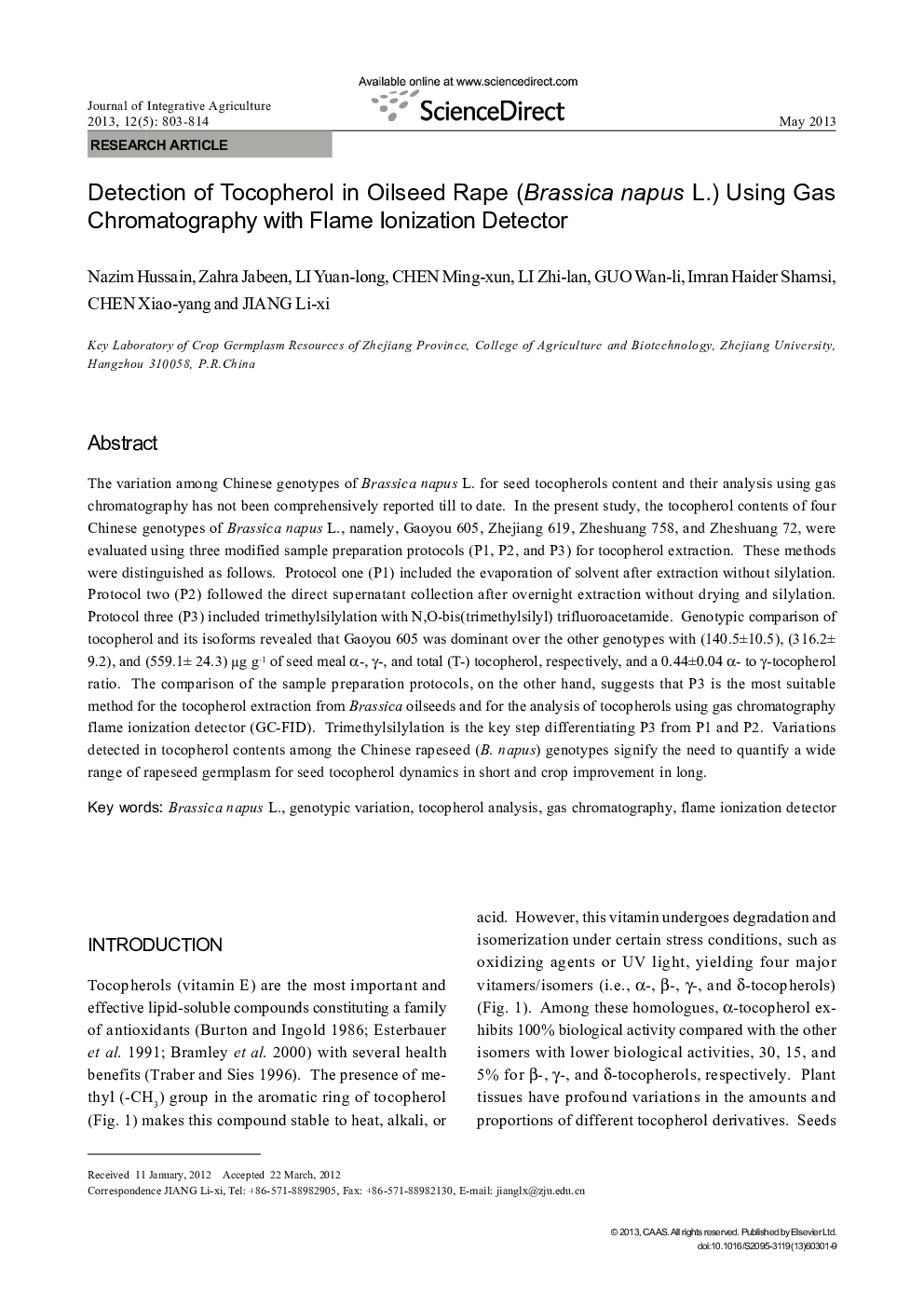| Article ID | Journal | Published Year | Pages | File Type |
|---|---|---|---|---|
| 4494892 | Journal of Integrative Agriculture | 2013 | 12 Pages |
The variation among Chinese genotypes of Brassica napus L. for seed tocopherols content and their analysis using gas chromatography has not been comprehensively reported till to date. In the present study, the tocopherol contents of four Chinese genotypes of Brassica napus L., namely, Gaoyou 605, Zhejiang 619, Zheshuang 758, and Zheshuang 72, were evaluated using three modified sample preparation protocols (P1, P2, and P3) for tocopherol extraction. These methods were distinguished as follows. Protocol one (P1) included the evaporation of solvent after extraction without silylation. Protocol two (P2) followed the direct supernatant collection after overnight extraction without drying and silylation. Protocol three (P3) included trimethylsilylation with N, O-bis(trimethylsilyl) trifluoroacetamide. Genotypic comparison of tocopherol and its isoforms revealed that Gaoyou 605 was dominant over the other genotypes with (140.5±10.5), (316.2± 9.2), and (559.1± 24.3) μg g−1 of seed meal α-, γ-, and total (T-) tocopherol, respectively, and a 0.44±0.04 α- to γ-tocopherol ratio. The comparison of the sample preparation protocols, on the other hand, suggests that P3 is the most suitable method for the tocopherol extraction from Brassica oilseeds and for the analysis of tocopherols using gas chromatography flame ionization detector (GC-FID). Trimethylsilylation is the key step differentiating P3 from P1 and P2. Variations detected in tocopherol contents among the Chinese rapeseed (B. napus) genotypes signify the need to quantify a wide range of rapeseed germplasm for seed tocopherol dynamics in short and crop improvement in long.
